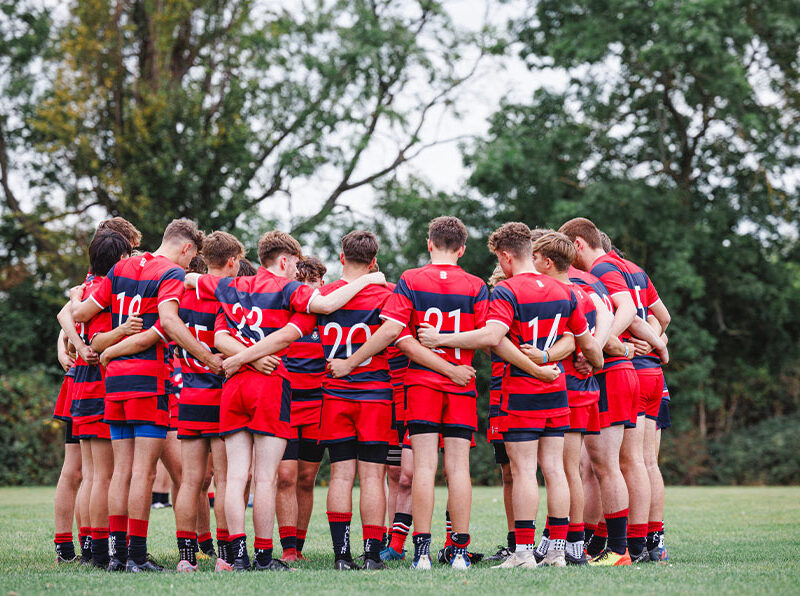
HOW TO SUCCESSFULLY COMBINE STATE AND PRIVATE EDUCATION
HOW TO SUCCESSFULLY COMBINE STATE AND PRIVATE EDUCATION
Melanie Sanderson, managing editor of The Good Schools Guide, advises on how to combine state and private education to get the best of both worlds…
All those scary newspaper headlines about the long-term costs of bringing up children pale into insignificance when set beside the £250,000+ required to educate a child privately from nursery to university.
But paying for a private education from finger painting to Freshers’ Week is not an option for most families anyway. Of those who opt for the independent sector, many choose to do so for only part of their child’s education.
However you play the education game, rest assured that no decision is final and if ever something isn’t working out for you or your child, it’s almost always possible to change. In fact, it’s often much easier to do at a stage when not everyone else is making the same decision.
Moving school at year 3, age 7/8
State primary school can work well if you have an able child who finds little difficulty with the three Rs. At the other extreme, those with serious learning difficulties, particularly if they have an EHC (Education, Health and Social Care) plan, will get one-to-one help for free (though you will probably need to fight hard for this).
Those in the middle may be the ones who thrive least well in a busy primary school — as much psychologically as academically. A hard-pressed teacher with a mixed-ability class of 30 children often simply doesn’t have the energy to focus on this unexciting middle group, and a parent with an underconfident, just-getting-by child may decide it’s worth pinching pennies for the extra attention that a private school can provide.
If you want to check how a primary school matches up to the private sector, one of the best indicators is the percentage of year 6 children (10-11-year-olds) achieving above the expected standard in their key stage 2 SATs — the level that would be expected from the majority of children in a good prep school. These figures are now included in performance tables. However, bear in mind that this probably shows as much about the intake as the quality of teaching.
Some parents choose to use the state system for the early years only, changing to a prep school at 7 or 8. However, some oversubscribed London prep schools make little allowance for a child who cannot read and write as fluently as candidates from more results-driven pre-preps, so you may want to consider coaching at home. Country preps and less pressured schools, on the other hand, may delight in taking youngsters who need their small-class nurturing to bring them along fast.
Moving school at year 7, age 11
State to private
Many independent schools, ever mindful of those A level league tables, are increasingly keen to attract the brightest and the best, so much of the emphasis of the 11+ entrance test is now put on raw IQ, which is generally gauged by verbal and nonverbal reasoning tests (English and maths are also on the menu at many schools).
The high-flying City of London School, for example — which has always had a broad intake in terms of means and social class — takes half of its 11+ entrants from the state sector. Even academically and socially elite public schools such as Westminster and St Paul’s are eager to attract the ablest 11-year-olds from the state sector into their own or allied prep schools. Harrow now provides bursaries to fund prep school education for the brightest boys aged 11-13 from particular London boroughs. Eton offers 13+ scholarships to boys who have attended a state school in at least years 6, 7 and 8.
IQ alone, however, is not the only factor. Parents keen to make the transition at this point may wish to hire a tutor (or tutor them themselves) from the middle of year 5 (year 6 is too late!) to solidify their child’s literacy and numeracy and prepare them for the unfamiliar and idiosyncratic verbal and non-verbal reasoning tests. Alternatively, many prep schools welcome pupils aged 10 or 11 to train them up for senior school entrance at 13 — although this mostly applies to boys’ or co-ed schools and is complicated by senior schools’ increasing tendency to pre-test in year 6 or 7.
Private to state
If you have a popular local state grammar school or two, the approach is often to concentrate expenditure at primary level. However, if you feel your child doesn’t have the raw material to compete in these immensely cut-throat exams, be prepared to go private all the way. It is hard for some parents to accept that their child’s expensive prep school preparation will not help them through grammar school entrance tests which are increasingly just reasoning papers — and increasingly done online. And the state schools don’t, mostly, interview.
You may alternatively have chosen private junior school education because you couldn’t get a place in a good state primary, but have an excellent state comprehensive down the road. In which case, save your money and be thankful.
Moving school at year 12, age 16/17
Over the last few years, governmental and social pressure applied on Oxford and Cambridge has resulted in state schools gradually increasing their success rate when it comes to Oxbridge applications and a decline in the numbers from independent schools. That being said, places still disproportionately go to children educated at private schools, just less so than before.
In 2020, 88% of UK sixth formers were state educated but only 70% of new Oxbridge undergrads had come from state schools. The leading independent schools still have a remarkable record with Oxbridge and other top universities but understandably, some view the growing success of the state sector (and diminishing success in the independent sector) as an ongoing trend and worry that sending their child to an independent school for sixth form may actually count against them when applying to Oxbridge.
Of course, university offers are mostly made before the exams are taken, but the still disproportionate rate of admission among the privately educated does suggest that independent school polish can tip the balance at interviews.
Independent school sixth forms often have scholarships for those with talent in music, art, sports or academics, so transferring to the private sector at this stage can make financial as well as scholastic sense.
However, there are reasons for going the other way too. Many move to state sixth forms for a greater range of A level options, perhaps a change from boarding school, or a wider social mix of friends. The new wave of highly-selective state sixth forms – see Harris Westminster and London Academy of Excellence – which arrived in the 2010s, have remarkable rates of success when it comes to Oxbridge.
Sometimes a move after GCSE is an opportunity for a pupil to make a fresh start and can revitalise interest in academic work; a move from single-sex to co-ed can also be a source of motivation (though sometimes a mixed blessing). Catchment areas become more flexible at this level, as do religious schools’ requirements of church attendance and so on.






